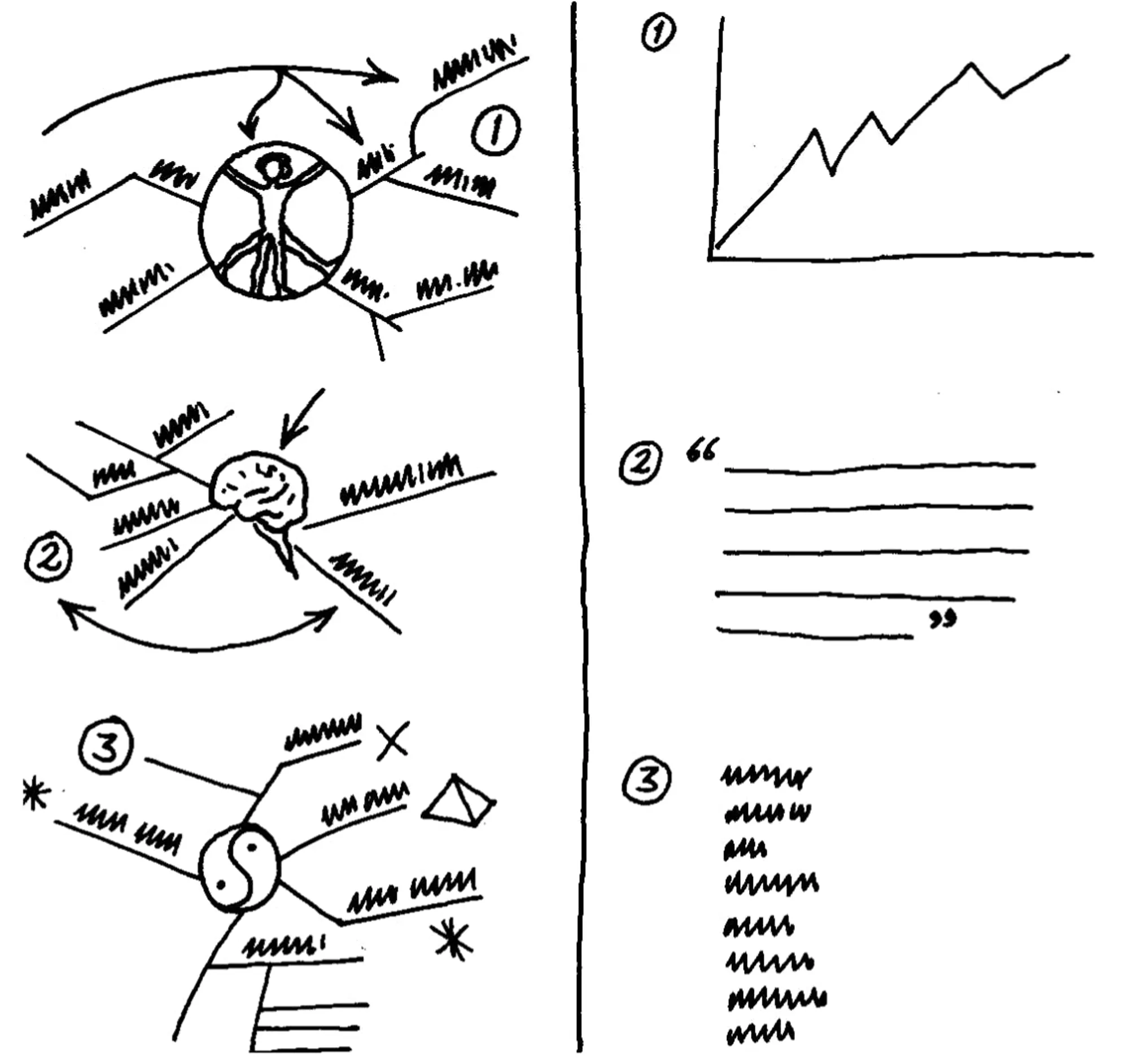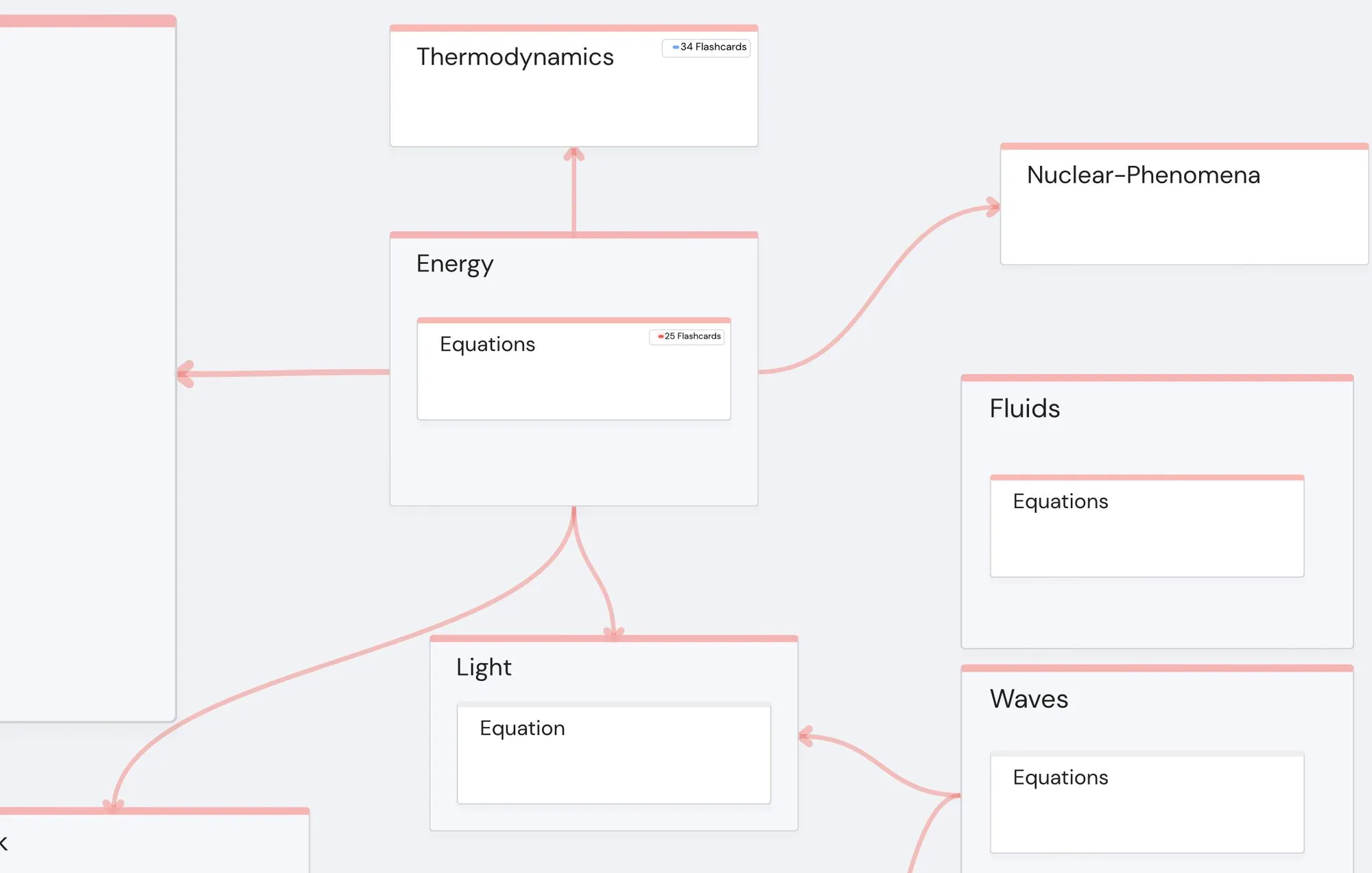At the end of this article you’ll know how you can convert Physics (or organic chemistry, or anything else) into a visual map to make the concept as simple as plain english.
The reason I couldn’t learn Chinese characters at first was because they were just random data. They didn’t relate to anything meaningful in real life.. just random squiggly lines.
When you first lay eyes on a bunch of physics equations, or even a list of plain english definitions in the field of psychology, the sheer amount of information can equally overwhelm you.
To start making sense of it, you have to make associations, connect it to what you already know.
A great way to do that is by drawing a map. So today, I’m introducing you to Concept Mapping.
In this interview, Elon Musk likens this process to a tree of knowledge:
“When I set out to tackle something – to solve some problem or create something new – first, it just seems insurmountable. When you enter a new field, you don't know anything; you don't even know what people are talking about! But, if I just persevere, if I keep going in this direction, eventually I'll start seeing what resembles a branch or a trunk, and then a leaf or two, and then I can start putting them together. Eventually, I'll see the whole tree.”
What
Concept mapping (or mind mapping): drawing a tree-like map of a new subject you’re starting to learn.
Why
Knowledge is organized like a a tree. But when you first encounter a new subject, you see all the leaves in isolation. Concept mapping helps you draw the branches to see how the leaves connect. Once you reach the trunk, you’ve hit upon the core ideas of the field.
How
Metalearning, or drawing map, is a two step process:
- Dump everything you about the subject in one place (creating a mess)
- Chunk it into branches that make sense to you, that build on top of what you already know (turning the mess into order - neural plasticity at work)
With pen and paper
Divide a sheet of paper in two halves. On the left, write down everything that comes to mind (dump). Then, identify the core ideas by asking “why?” repeatedly.
As you identify ideas, start drawing. Put the core ideas in the center. Make them branch out into the smaller details.

In Traverse
Traverse has the exact same layout. Create a new topic, and dump everything (including links to resources and textbook passages) on the first page (on the left).
Then, start asking “why?” to draw your map (on the right). As you draw your map, you can move resources from the first page into the relevant subpage you’ve created. So you can gradually see the first page get cleaner as chaos turns into order.
Here’s a video of me going through this process.
In Traverse (from Anki)
If you import an Anki deck into Traverse, the process is slightly different. After importing, there will be one or more pages with all your flashcards. This is your ‘dump’.
Now, start identifying the core ideas, and draw your map from the first page. Finally, go into each of the pages that contain flashcards, and drag each flashcard to the right place in the map. This really makes you think about the bigger picture, and you’ll learn a lot in the process.
Here’s an example of Raleigh drawing a map from an Anki deck.
Example
Let’s ask ‘why?’ to draw a map of Chinese characters.
Why does 学 mean “learning”? A Chinese might answer that 子 is a character by itself, and means “child”. And that 冖 represent the roof of a house, and the ⺍ make that a “schoolhouse”. And if I keep asking why?, he might explain that a limited number of elements 子, 冖 and ⺍, form many different combinations that make up all Chinese characters.
Now I can draw a map with the basic elements at the center, and branching out into ever more complicated characters (like 懂).
Template
To help you get started I’ve created a template to help you build your first mindmap!
In the next article I look look more closely at connections, and how they can be hierarchical or lateral.

